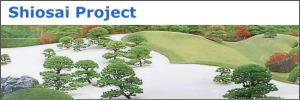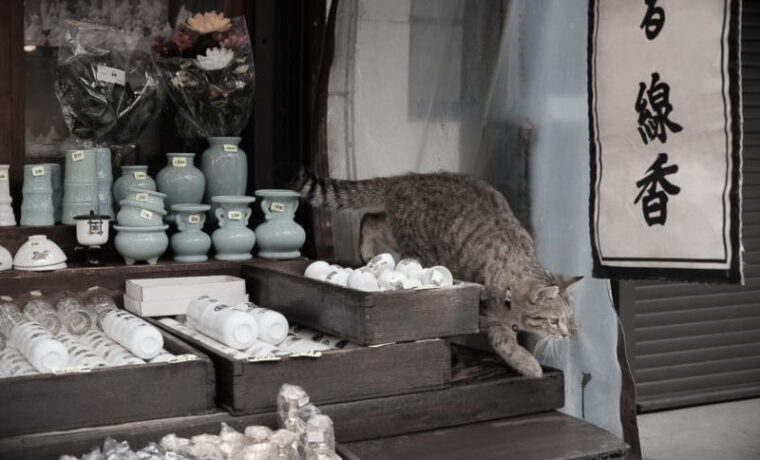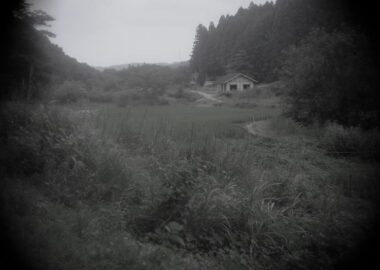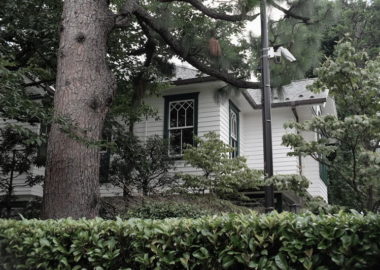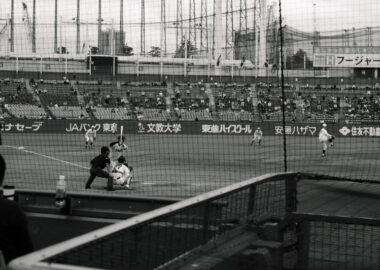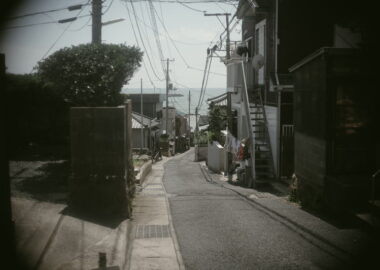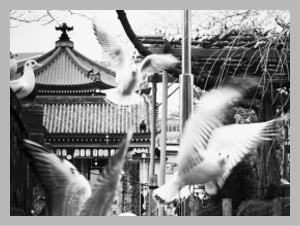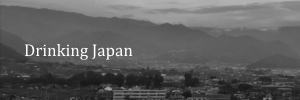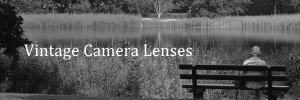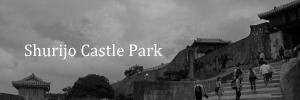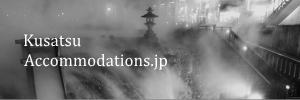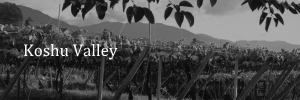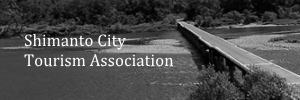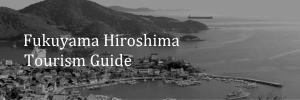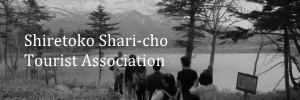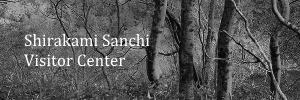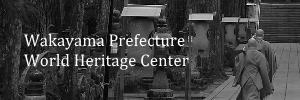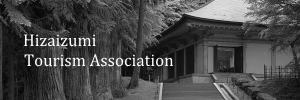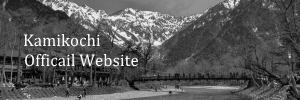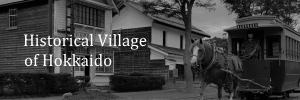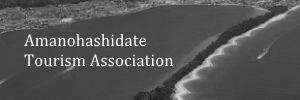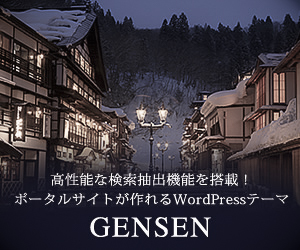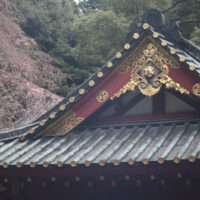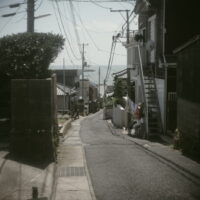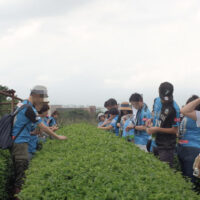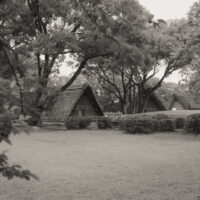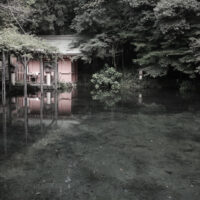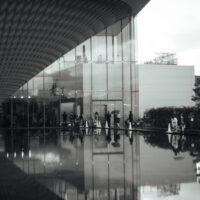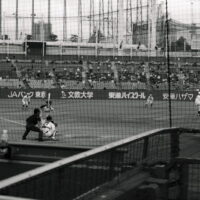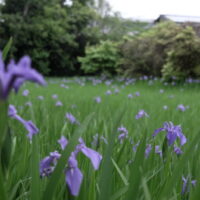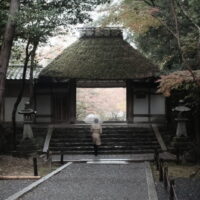The Shibamata district in Katsushika Ward (commonly called “Katsushika Shibamata”) is located along the Edogawa River at the northeastern edge of Tokyo Prefecture (in the Kanto Region). Shibamata is Tokyo’s old town that retains the Showa-Era (1926 – 1989) atmosphere. With Shibamata Taishakuten Temple, a symbol of the area, in the center, Shibamata has a couple of interesting spots, all of which are conveniently located within walking distance of each other.
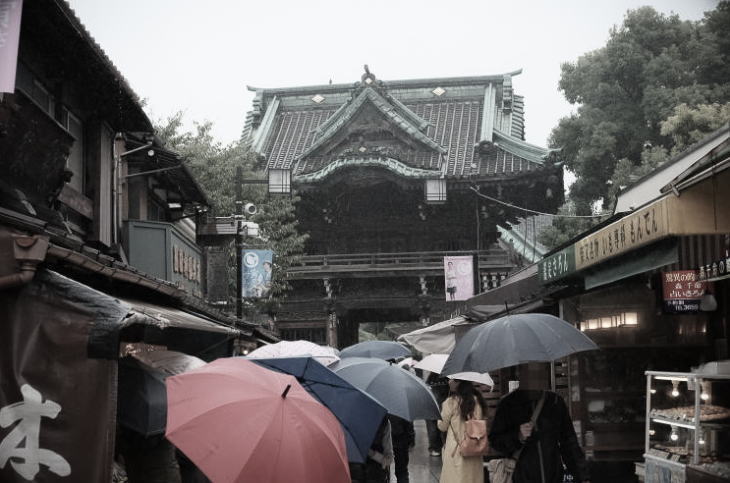
Among these spots is the approach (sando) to Taishakuten, a busy shopping street where shops and restaurants established long ago line both sides. Stroll around from one shop to another while eating free samples of traditional Japanese food. Then you might have a chance to meet warm-hearted local people and experience some aspect of the lively atmosphere of Tokyo’s shita-machi (or an ‘old downtown district’).
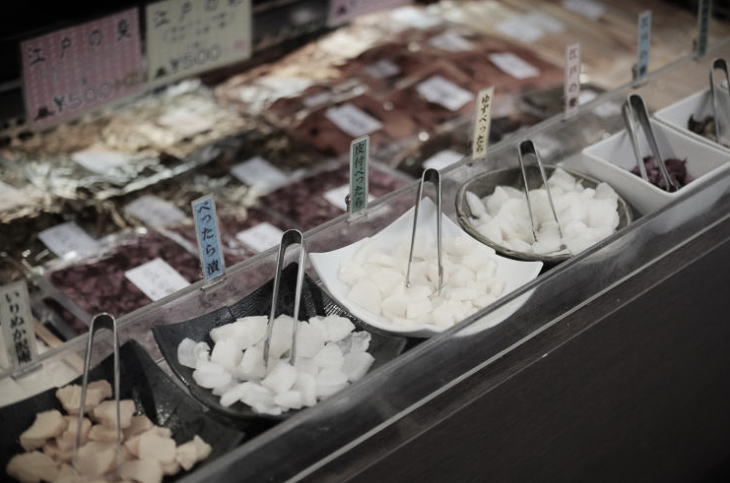
Tora-san’s Hometown
Katsushika Shibamata also has a world-famous Japanese garden as well as a ferryboat pier from the Edo Period (1603 – 1868). But perhaps most people in Japan today associate the name of Shibamata with Tora-san. He is the central character of the popular film series Otoko wa Tsurai yo. In the series, Shibamata is Tora-san’s hometown. And stories often begin with a scene in which this itinerant peddler comes back to Shibamata unexpectedly.
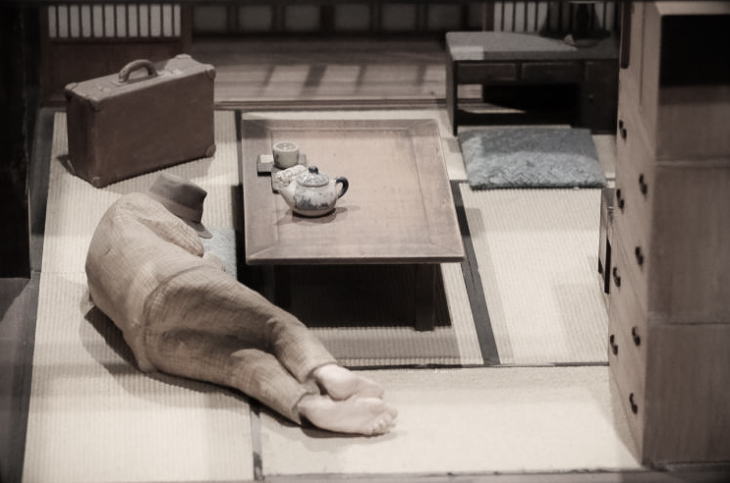
Guinness Book of World Records
From the first release in 1969 until 1995, 48 Tora-san movies were made. During this period, Kiyoshi Atsumi played the character of Tora-san in every movie. And the series is now in the Guinness Book of World Records as ‘the longest-running movie series starring a single actor’. (As far as the length alone is concerned, 007 James Bond movie series takes the title for the longest running movie series in the world, but five different actors has played the title-role, as of 2021.)
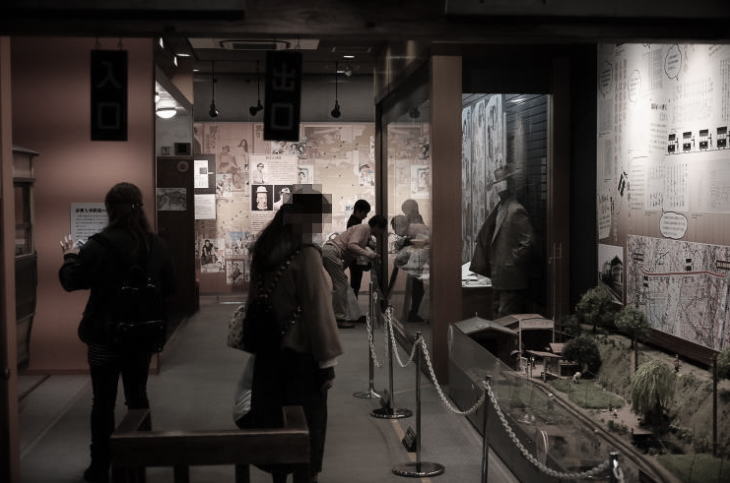
Even after Atsumi’s death in 1996, Tora-san series has had a lot of followers. In 2019, the 50th Tora-san movie was released, ushering in a short Tora-san revival in Japan. Also, the Tora-san Museum in Shibamata, a sacred place to fans, recorded its five millionth visitor in October, 2020 amidst the coronavirus pandemic.
Thoughts about Katsushika Shibamata
When people talk about ‘must-see places’ in Tokyo, it seems Shibamata often takes a backseat. I guess that one of the reasons for Shibamata’s slightly inconspicuous position as a sightseeing spot is that there are several places much closer to the city center of Tokyo that share similar shita-machi characteristics with Shibamata. Among them are Asakusa and Yanaka, and the areas around Ueno and Okachimachi also have a somewhat similar atmosphere. Asakusa and Shibamata are both roughly northeast of Tokyo Station. But while Asakasa is just merely 4.4km (2.7mi.) from the station, Shibamata is 14km (8.7mi.) away. Given the choice between two similar towns, most people would probably choose to visit the closer one.
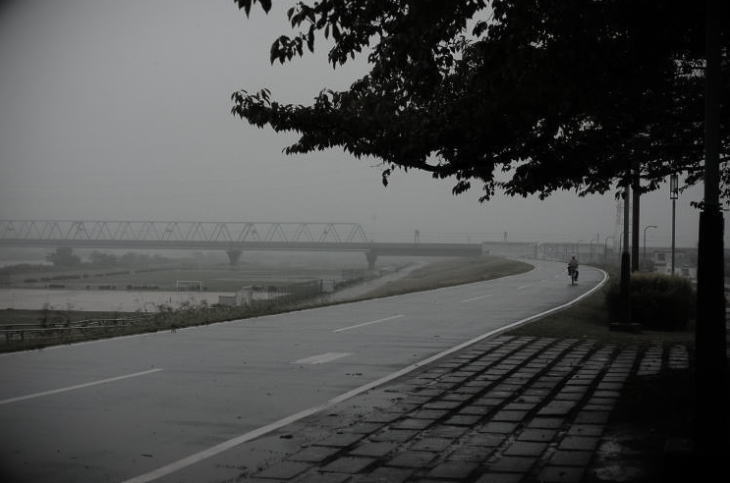
Shibamata has a slightly different character from any of the places above. And it is worth visiting even if you are not familiar with the Tora-san films. I hope that I can convey some of Shibamata’s innate charms in this write-up. But before getting down to the main topic, I would like to add a few words. Many of the photographs on this page don’t necessarily reflect the current state of Shibamata because they were taken in the old days (yet not so long ago), the days before the onset of the coronavirus pandemic, which has changed many things. Today (as of March 2021), the Taishakuten sando is generally not so crowded as it used to be, and I am hoping things return to the way they were.
Shibamata Station
The most convenient place to start your Shibamata tour is Shibamata Station on the Keisei Kanamachi Line, a short railway line running a distance of 2.5km (1.5mi.) between Keisei Takasago and Keisei Kanamachi. The landscape seen from the window of its passenger cars might be interesting to some people. Since the line runs on the periphery of Tokyo, there are not many modern high-rise buildings in sight. Instead, you can see some old two-storied buildings with slightly dirty outer walls. On the square in front of Shibamata Station stand the statues of Tora-san and Sakura (Tora-san’s half-sister). Positioned as they are, it looks as if Sakura is seeing off Tora-san who is determined to hit the road again.
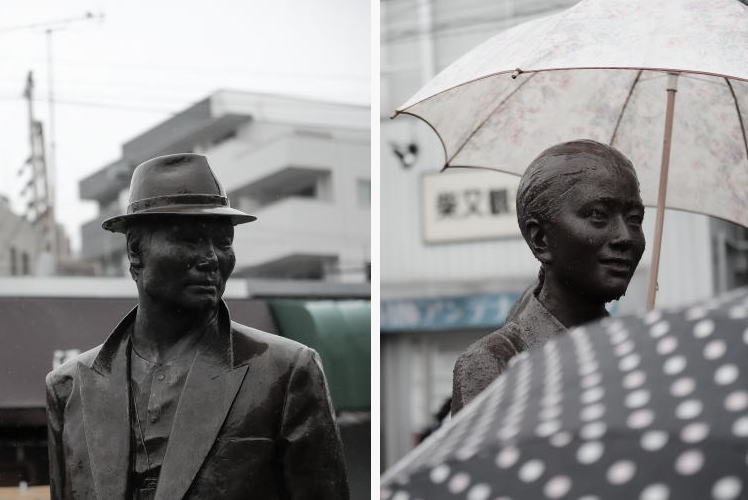
On this square, there used to be a row of shabby-looking shops and eateries, such as a stand-up soba noodle shop and a small sake bar. And they actually had a certain number of patrons as they created the nostalgic Showa-Era atmosphere. Unfortunately, in 2019, the Keisei Railway decided to redevelop this area in front of the station. And despite the opposition from many people and concern expressed by Yoji Yamada, the director of Tora-san series, these old buildings were demolished and the construction of a modern commercial complex is now underway, with an estimated completion date of June 2021.
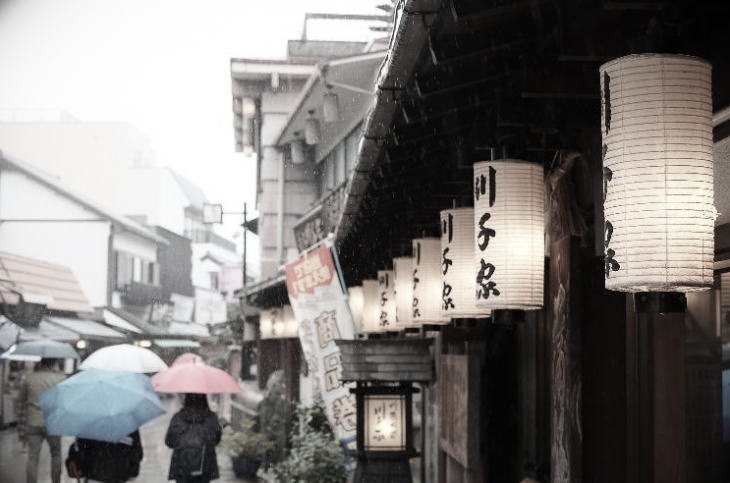
Taishakuten Sando
However, most of the places in Shibamata still retain an air of the ‘good old days’. Just a few-minutes walk from the station takes you to Taishakuten sando. Many of the shops and restaurants here have a history of more than 100 years, including a couple of them dating back to the Edo Period. There are shops selling various traditional Japanese food, such as dango (rice dumplings), senbei (rice crackers), yokan (sweetened bean jelly), and tsukudani (a preserved food dipped in sweetened soy sauce). Strolling through the avenue, you might feel as if you were at the set of a Japanese period film and could run into Tora-san at any moment.
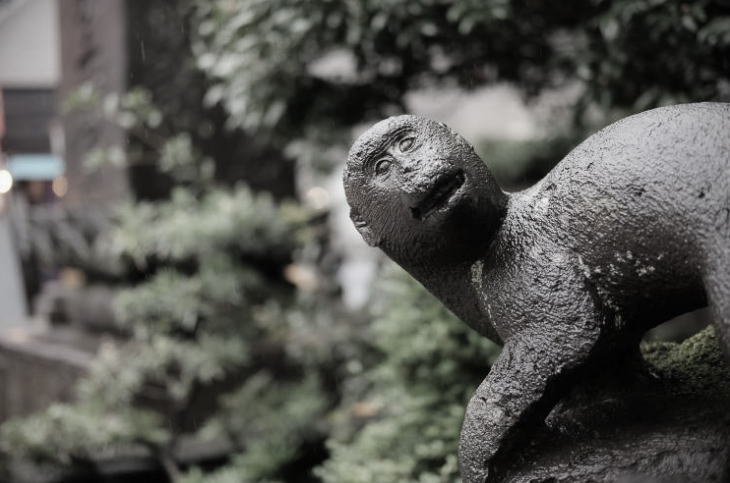
Shibamata Taishakuten Temple
At less than 200m, this avenue is not so large in length. At the end of it stands the Nitenmon Gate of Shibamata Taishakuten Temple, a magnificent two-storied structure built in 1896. Two of the carved ‘Four Heavenly Kings’ of Buddhism are found on both sides of this gate. And the name Nitenmon (literally, the ‘gate of two heavens’) came from it. These two statues were originally the works from the Heian Period (794 – 1185). And when the Nitenmon Gate was completed, the statues were sent to Taishakuten by Kyotoku-ji Temple in Osaka as a gift (from one Nichiren-sect temple to another).
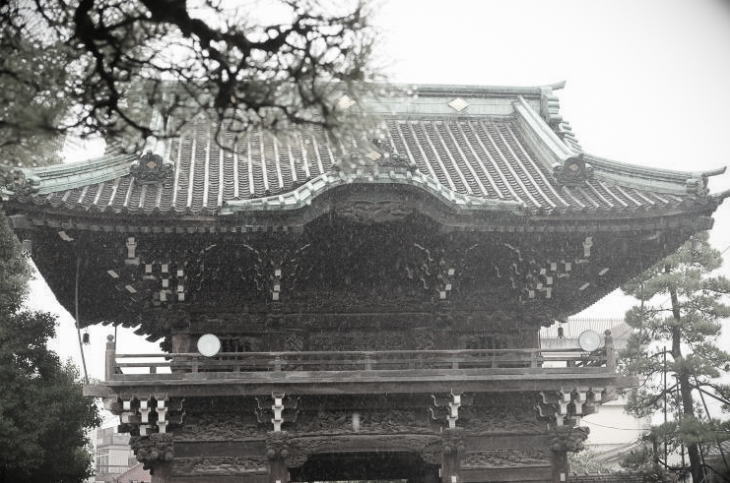
Beyond this gate, there is the Taishaku-do Hall, which consists of two sections: Haiden (Worship Hall) and Naiden (Inner Hall). Haiden is the place where there is a long line of worshippers in the New Year period. The magnificent pine tree in front of the hall is a sight to see. People thought this pine tree, extending four different directions, resembled a rising dragon and called it Zuiryu no Matsu (“ryu” means dragon). Said to be more than 400 years old, the pine tree is now a natural monument of Tokyo Prefecture. Both the Taishaku-do Hall and the Nitenmon Gate were constructed under the guidance of Sakata Tomekichi, a carpenter who is called ‘the last master of the Edo-Period architecture’. And both of these buildings are made entirely of keyaki (zelkova) which is a hard wood resistant to decay.
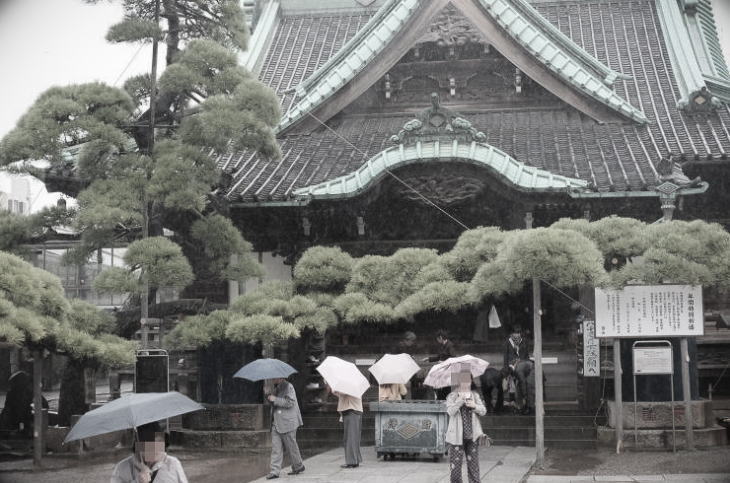
Sculpture Gallery
If you visit Shibamata Taishakuten, I hope you will not only pray there but also take time to look at the spectacular wood carvings. This temple has such a large number of carvings that people call it the ‘Temple of Carvings’. They are on every building in the precinct. And the highlight of them is a group of carvings on the outer walls of the Inner Hall. They call this section the ‘Sculpture Gallery‘. Its artistic quality is sometimes described as kokuho-kyu (国宝級, literally, ‘in the same league as a National Treasure’).
Although it costs a fee of 400 yen to enter this area, it’s worth seeing. There are ten large wooden panels, each of which bears an anecdote from Hokekyo (法華経 or the Lotus Sutra), the most well-known of the Buddhist scriptures. Each of them was carved by a different sculptor during the period between 1922 and 1934. And now transparent panels shield the works from the elements.
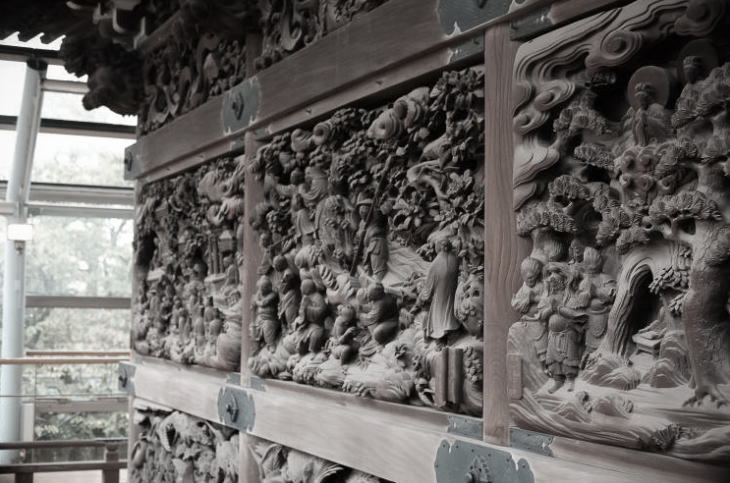
Discovery of the Principal Image
Shibamata Taishakuten is the common name of Daikyo-ji Buddhist Temple founded in 1629. It is said that on one Koshin Day in 1779, the long-lost principal image of the temple, which was a wooden image of Taishakuten (one of the Buddhist deities), was discovered serendipitously during restoration work on the Main Hall. Koshin (庚申) comes from an ancient Chinese method of recording days (or years). And a Koshin Day comes around every 60 days. Since the discovery of the principal image, a Koshin Day has become the official En-nichi (the day for having a fair) of Taishakuten Temple. If you see the first Tora-san movie which starts with a scene of Taishakuten’s En-nichi, you will realize how crowded and lively it can be.
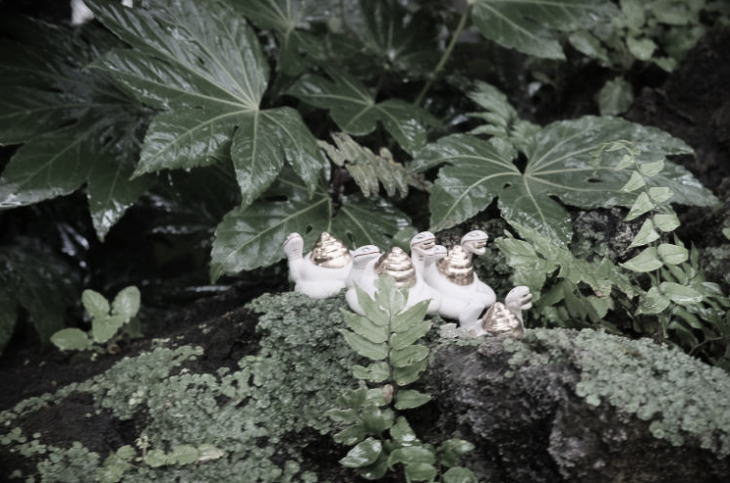
Exploring the Sando
If you get a little tired after a visit to Taishakuten, how about returning to the Taishakuten sando to take a little rest? One of the specialties of Shibamata is kusa-dango (草団子), a kind of rice dumpling mixed with ground mugwort (yomogi). It was in the Edo Period that farmers in the Shibamata area started to produce this local food using yomogi leaves plucked from the banks of the Edogawa river. Now there are several kusa-dango shops along the avenue. And a couple of them played a very important part in the history of Tora-san movies.
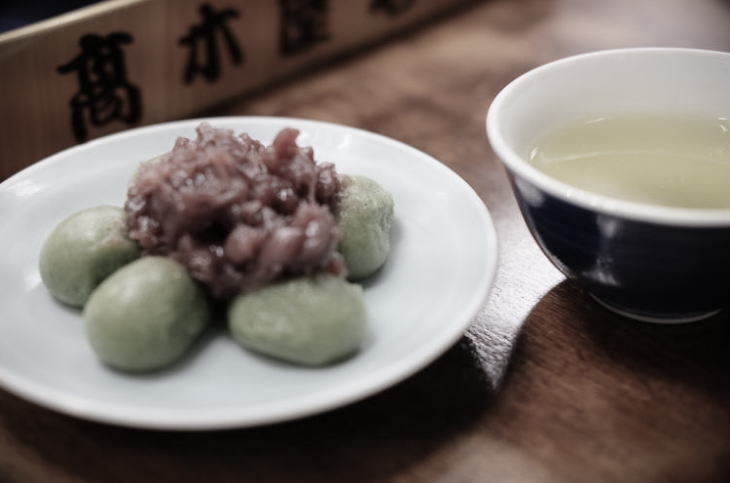
Toraya Shop & Eatery
Among them is the Toraya Shop & Eatery established about 130 years ago. From the first to the fourth Otoko wa Tsurai yo movie, this shop was actually used as Tora-san’s home (to be exact, the kusa-dango shop run by Tora-san’s uncle and aunt, at the second floor of which Tora-san rented a room). And the actual stairs used in those films still remains at the back of the shop.
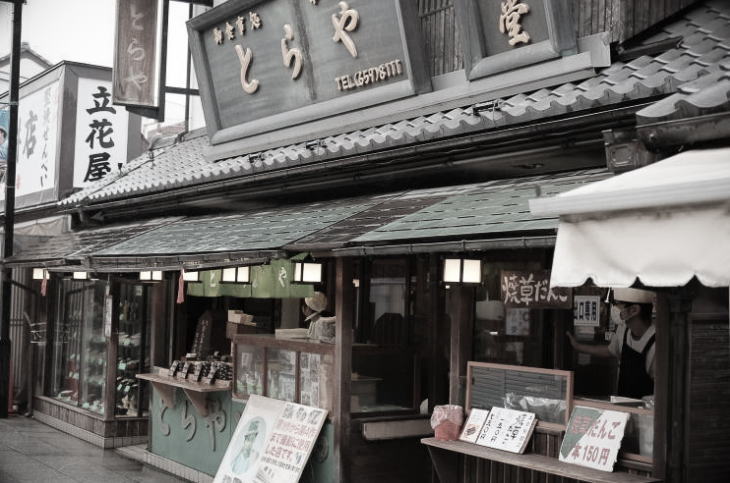
Takagiya-roho Shop & Eatery
Takagiya-roho Shop & Eatery is also a long-established kusa-dango manufacturer from the Meiji Era. It was the rest place for the actors and actresses during the filming of Tora-san series. And that is why their valuable photographs are on the walls of the eatery.
One might notice that the interior layout of the shop, with its wide frontage along the sando, is similar to that of Tora-san’s home in the movies. This has something to do with the fact that the building of Takagiya-roho hasn’t undergone a major renovation since its founding. So, if you look out to the street from the inside of the shop, you might feel as if you are in a Tora-san film. The kusa-dango served at these shops in Shibamata have a light, simple taste with the refreshing flavor of yomogi. And since the sweetness of the bean paste over the dango is not excessive, it feels like one could eat a plateful.
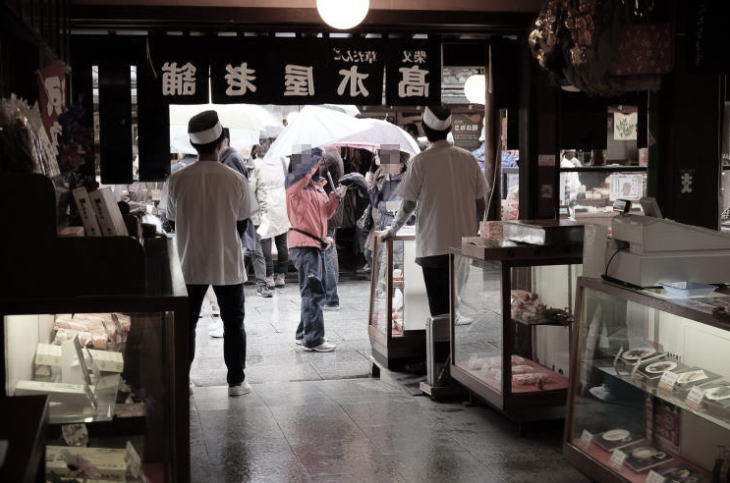
Sonoda Butsudan Store
Besides these kusa-dango shops, there are a number of other interesting shops and restaurants along the approach to Taishakuten. Sonoda Shinbutsugu-ten (Sonoda Butsudan Store) is one of them. The shop carries various goods related to Buddhist and Shinto altars, such as incense sticks and Buddhist juzu rosaries. This shop also sells traditional folk crafts, like various types of netsuke (a kind of miniature carvings), which are suitable as gifts. As the third-generation son of a woodcarving family, Sonoda-san, the proprietor of the shop, has carved many of the small woodcrafts here himself. In fact, his father and grandfather contributed much to the carvings at Taishakuten Temple.
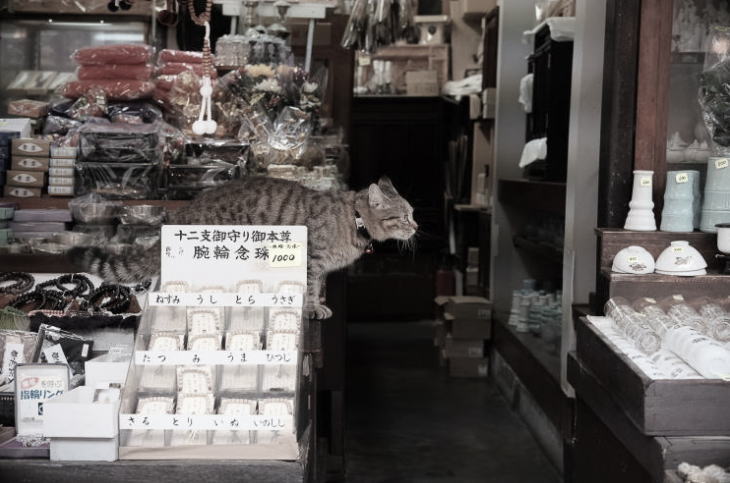
Yamamoto-tei
A short walk from Taishakuten Temple takes you to Yamamoto-tei (or the Yamamoto House). Once it was the residence of Einosuke Yamamoto, president of a camera parts manufacturer in Tokyo. And the buildings we see today date back to the late 1920s. In 1986, Katsushika Ward (an administrative unit of Tokyo) eventually acquired Yamamoto-tei. And the property has been open to the public since 1991. For a small fee, we can take a tour of the inside of the house. What is interesting about Yamamoto-tei is that we can see two different architectural styles ― Japanese and Western ― coexist here.
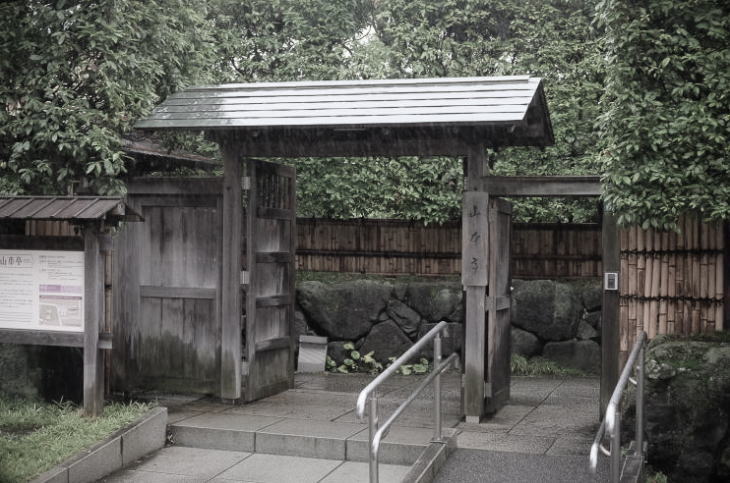
Most of the main building of Yamamoto-tei is built in the traditional Japanese style typical of the early 20th century, using a number of glass plates in the engawa (a passage facing the garden) and ranma (a decorative panel above the sliding doors). The Japanese shoin-style rooms at the corner are used as a café where you can sit on the floor and enjoy a cup of matcha (powdered green tea) and Japanese traditional confectionery.
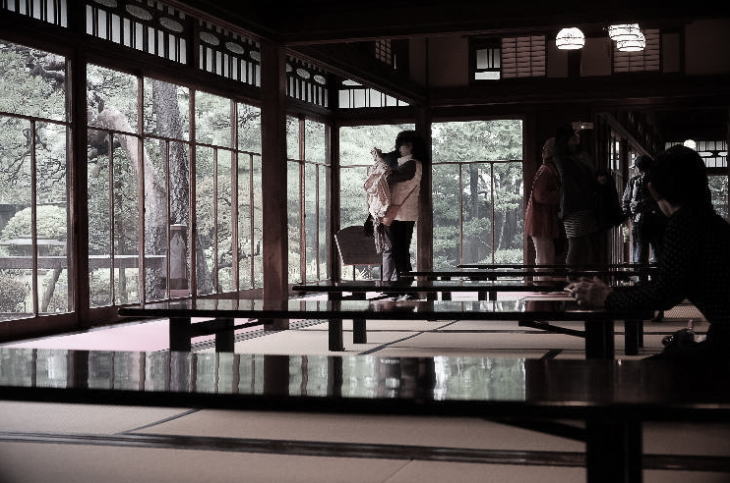
Houou-no-ma (or the ’Phoenix Hall’) is a room at the far end of the house. This is different from all the other rooms in the building because it is a Western-style room. In the heyday of the property, this room was a drawing room. And President Yamamoto (and his three succeeding generations) welcomed guests there. Today, one can enter into the room and appreciate the magnificent pieces of furniture, including the marble mantlepiece and stained-glass windows.
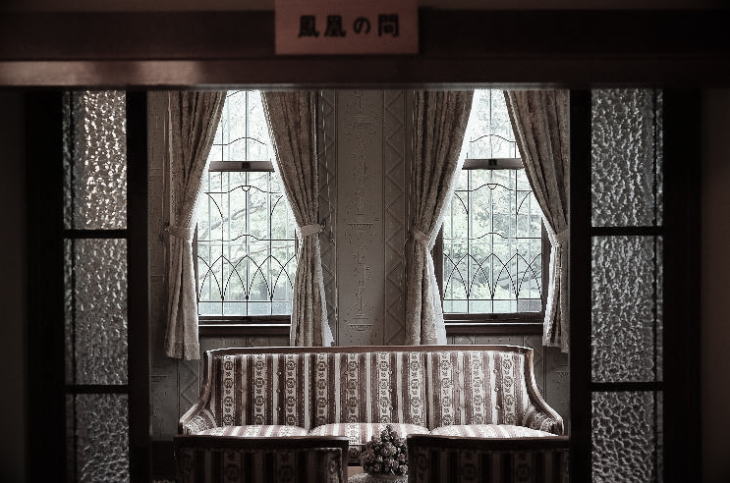
Blending of Western and Japanese Styles
This unique blending of Western and Japanese styles is called wayo-secchu (和洋折衷) and we can often see it in structures from the late 19th to the early 20th century. This was the period when Japan’s long-time ‘isolation policy’ ended and the new ideas and items from the West poured into the country. So, it is no wonder this unusual architectural style was in fashion among the wealthy class in that era. Yamamoto-tei is one of the prime examples of wayo-secchu architecture. And for this reason, it became a ‘Tangible Cultural Property’ of Katsushika Ward as well as a ‘Selected Historical Building’ by Tokyo Metropolitan Government.
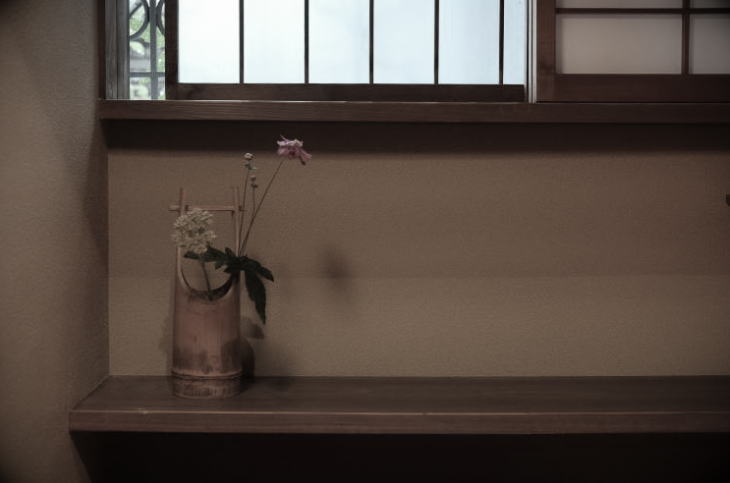
Japanese Garden at Yamamoto-tei
The highlight of Yamamoto-tei is its beautiful Japanese garden, which is known as ‘the garden which has gained worldwide recognition’. There is a US publication called Sukiya Living Magazine (Journal of Japanese Gardening), which has been loved by garden aficionados across the U.S. and is considered to be the Bible for Japanese gardening. Since 2003, the same team of experts writing and editing the magazine has hosted a research endeavor called the Shiosai Project. In this project, they rank as many as 1,000 gardens in Japan according to the editors’ own unique standards. And they announce the top 50 every year. In this ranking, the garden of Yamamoto-tei was ranked third for four consecutive years from 2014 to 2017.
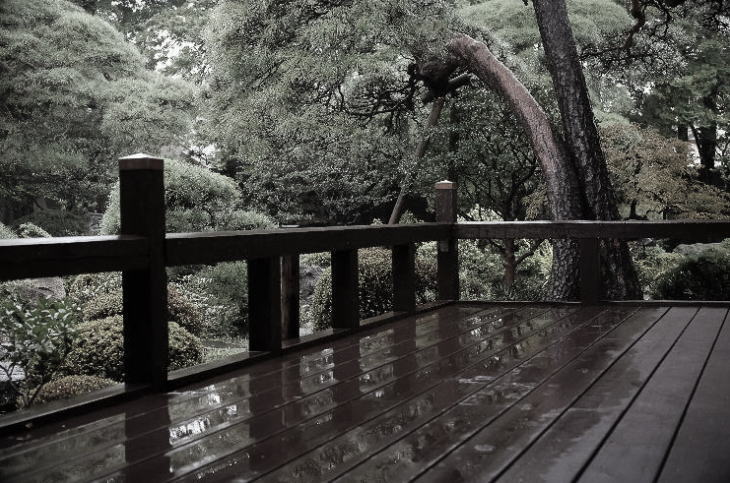
Conversation with the Manager
Yoshida-san, the manager of Yamamoto-tei for 20 years, spoke to me recently about this high reputation from overseas. “We are very proud of it. It’s an honor to be appreciated by such a prestigious organization,” she said.
“Unfortunately, Yamamoto-tei came in at fourth place from 2018 through 2020. I guess, of course, you are aiming at making a comeback to the third place next time,” I said.
“We are not ‘aiming at’ it. That’s beyond our power. It’s not for us to decide, anyway. But we’d be glad if it turned out to be like that.”
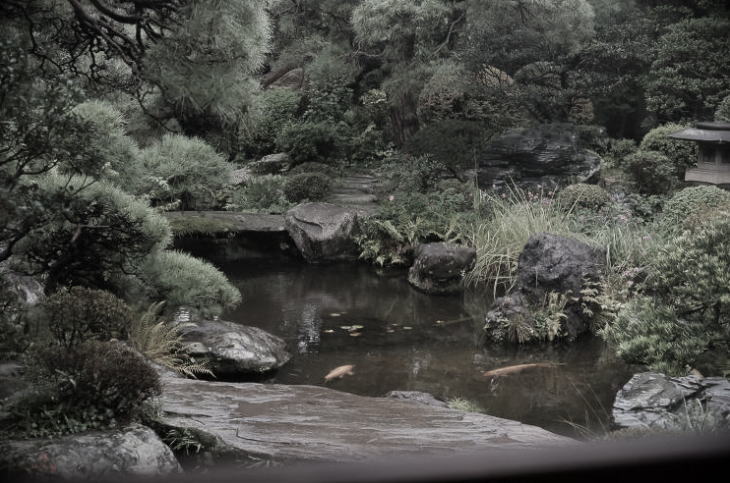
Mr. Yamamoto’s Intention
Yoshida-san is a master of tea ceremony herself. And I asked her what was the greatest appeal of the Japanese garden at Yamamoto-tei.
“First of all, I need to note it is a zakan-style (座観式) garden, which means it is a garden designed to be appreciated best from a low angle, like when you are sitting on the floor. That was Mr. Yamamoto’s original intention. If you keep a low posture, you’ll find you can see the entire garden, which includes even the tip of that tall tree.”
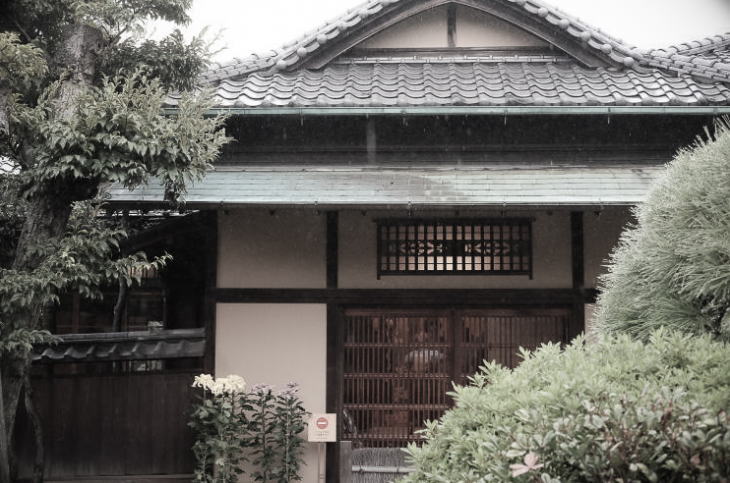
“So, if you sit on the floor and drink matcha at the café over there, you can view the garden from the best position,” I said.
“That’s right. We often see visitors take photos of the garden while standing in the engawa, but that’s not enough to grasp the whole picture of it. And that’s the very reason there is a café here in the living room.”
“What do you mean by that?”
“I mean this café was not opened for commercial purposes originally. The primary purpose was to get guests to sit on the floor so that they can appreciate the best view of the garden.”
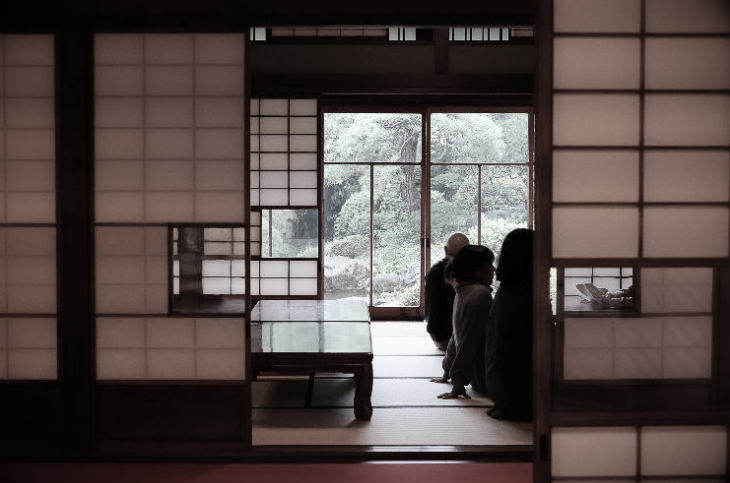
The Tora-san Museum
The Tora-san Museum is located right next door to Yamamoto-tei. This is a place where you can be immersed in the world of Otoko wa Tsurai yo. In the area just beyond the entrance, you can see the props and other items from the actual movies. They include a megaphone, a clapperboard, and the chair on which the director Yoji Mamada often sat. The highlight is the exhibit of the interior of Kurumaya Kusa-dango Shop (Tora-san’s home in Shibamata). This set is the real one used in many of the Tora-san movies. People transferred the set straight from the Shochiku’s Ofuna studio in Kamakura (after it stopped operation on June 30, 2000).
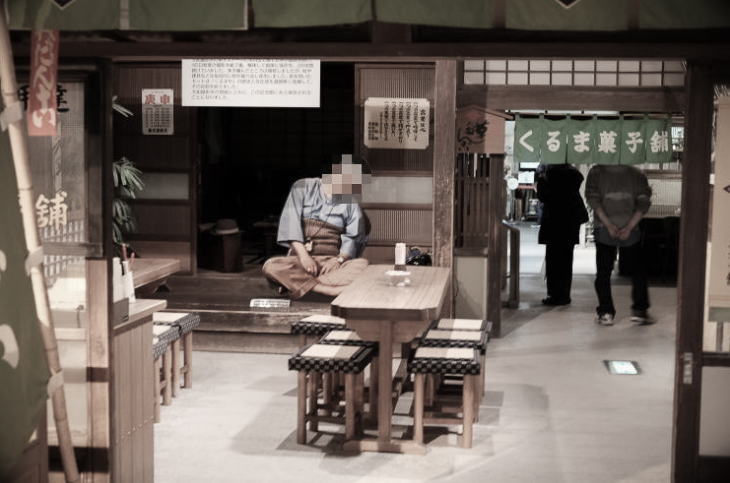
Tora-san’s Train Journey
Other attractions in the museum include a diorama exhibit of Taishakuten’s sando from Tora-san’s childhood days in the 1950s. Each and every item here is crafted to the last detail. And you might feel as if you have gone back in time. Also popular among fans is the area of ‘Tora-san’s train journey’. This feature was newly added to the museum in December 2015 under the supervision of director Yoji Yamada himself. Tora-san, when traveling, liked to use a slow train rather than take the shinkansen or other express trains. In this attraction, one can sit in the seat of a nostalgic Showa-era train and enjoy watching famous scenes from various Tora-san movies projected on the window.
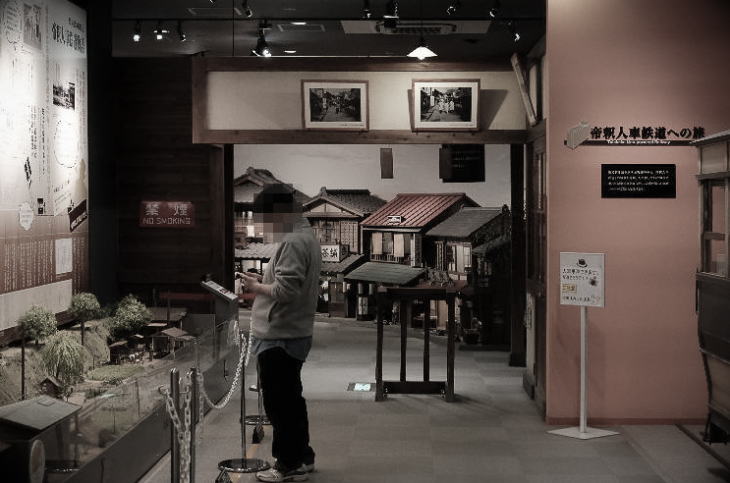
Getting There (English Map)
As I said above, many people start exploring Katsushika Shibamata after taking the Kaisei Kanamachi Line to Shibamata Station. Featured in many Tora-san movies, this station itself is an iconic place for fans. If you come by car, there is a large parking lot along the Edogawa River from which most of the popular spots in Shibamata are within easy walking distance.
Other Photos
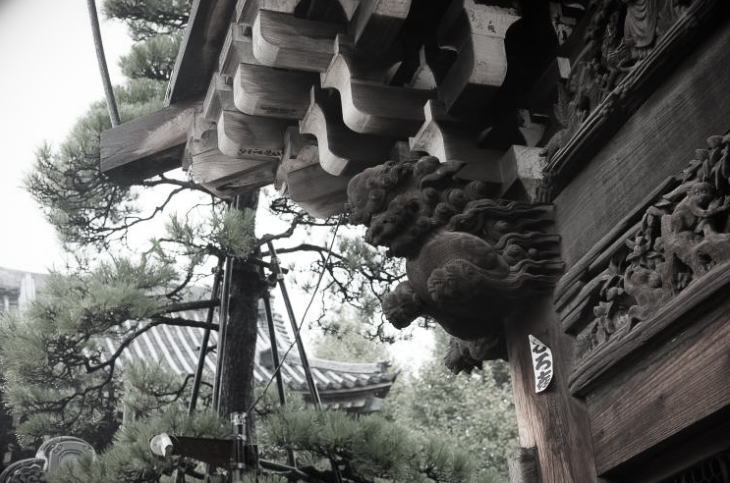
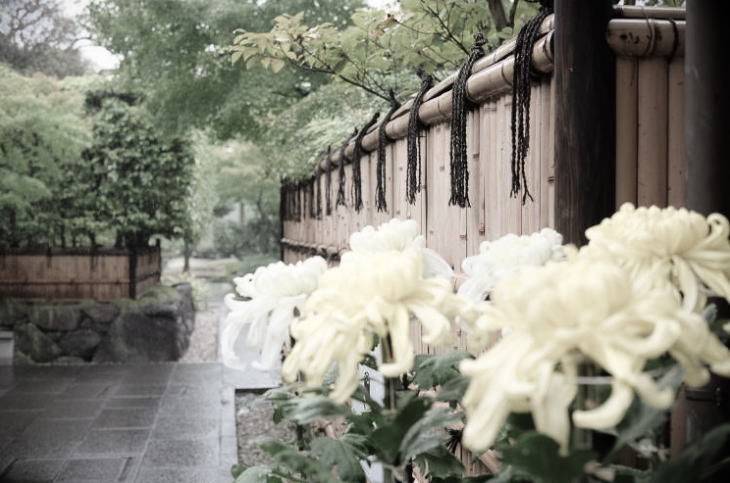
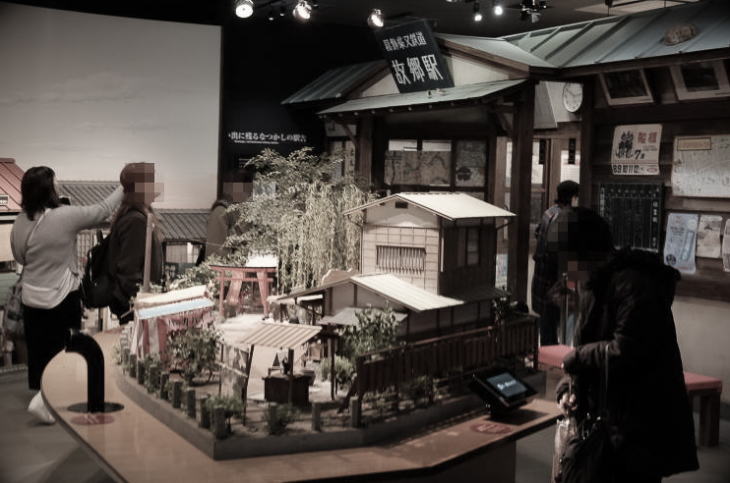
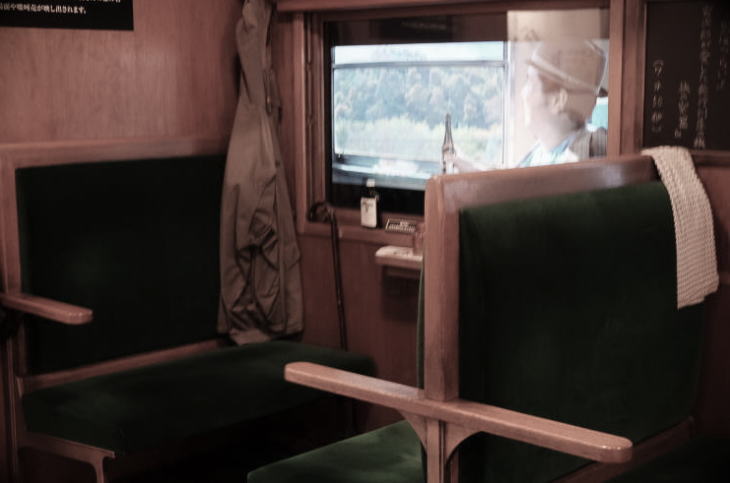
Other Places in Shibamata
The Yagiri no Watashi pier is the only existing ferryboat pier from the Edo Period in Tokyo Prefecture. The name of this pier is well-known in Japan because the site has been immortalized in various mediums. There are a popular song of the same name, Ito Sachio’s 1906 novel Nogiku no Haka (“The Wild Daisy”), and of course, several movies in the Tora-san series. Today we can actually cross the Edogawa River in a wooden ferryboat to reach the opposite side. This is a five-minute trip for a fee of 200 yen. And the boatman will talk about the region as you ride.
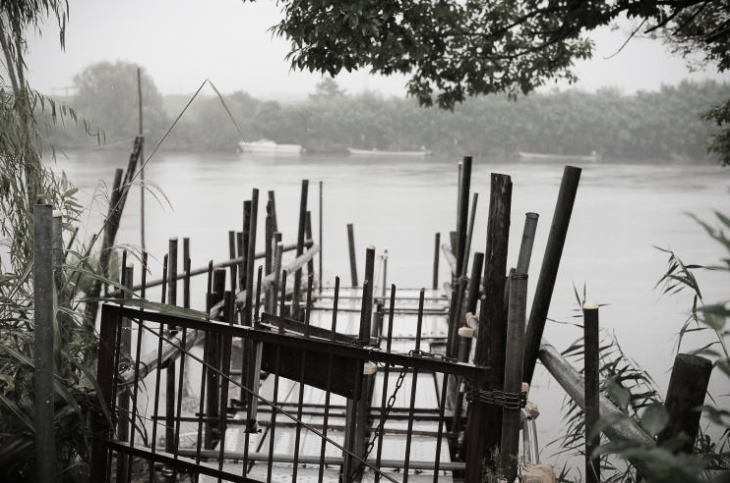
Other interesting spots in Katsushika Shibamata include the Yamada Yoji Museum. A ticket to the Tora-san Museum can get you in the museum. Here you can learn about the achievements of Yoji Yamada, the director and screenwriter of the Tora-san series, through various exhibits, including the actual projectors and other equipment he used for filming. When it comes to having lunch in Shibamata, I recommend Toroku, a monja-yaki restaurant, because the monja they serve is delicious and the staff is very kind.
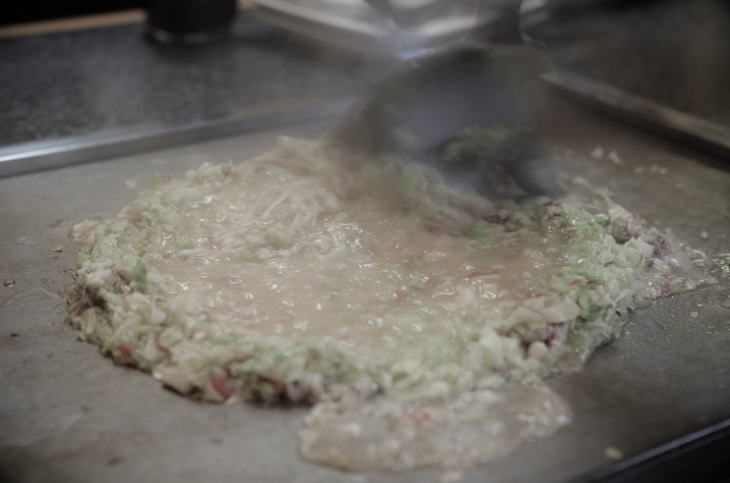
Conclusion
In 1996, the Ministry of the Environment selected the area around Shibamata Taishakuten as one of the ‘100 Soundscapes of Japan’. Also, on February 13 in 2018, the Japanese government designated the ‘cultural scenery of Katsushika Shibamata’ as one of the ‘Important Cultural Landscapes’. (It was the first place in Tokyo Prefecture to receive this distinction.)
In 2020, during the coronavirus pandemic, the newspaper carried worrisome stories about the decreasing number of tourists visiting the Taishakuten sando. And as of early spring in 2021, the shadow of the virus has not completely lifted. But most of the facilities and shops in Shibamata (including the ones I introduced here) are still open for business. I guess that, whatever happens in the future, they will persist, because they are largely supported by their loyal customers. If you are interested in Katsushika Shibamata, or are thinking about visiting this area in the future, please send an e-mail through the Rate/Contact page of this site.
Photographs on this page:
taken in Katsushika Shibamata, by Koji Ikuma,
with a Fujifilm X-T1 equipped with an XF 35mm F2 R WR lens.
Outbound Links (New Window)

